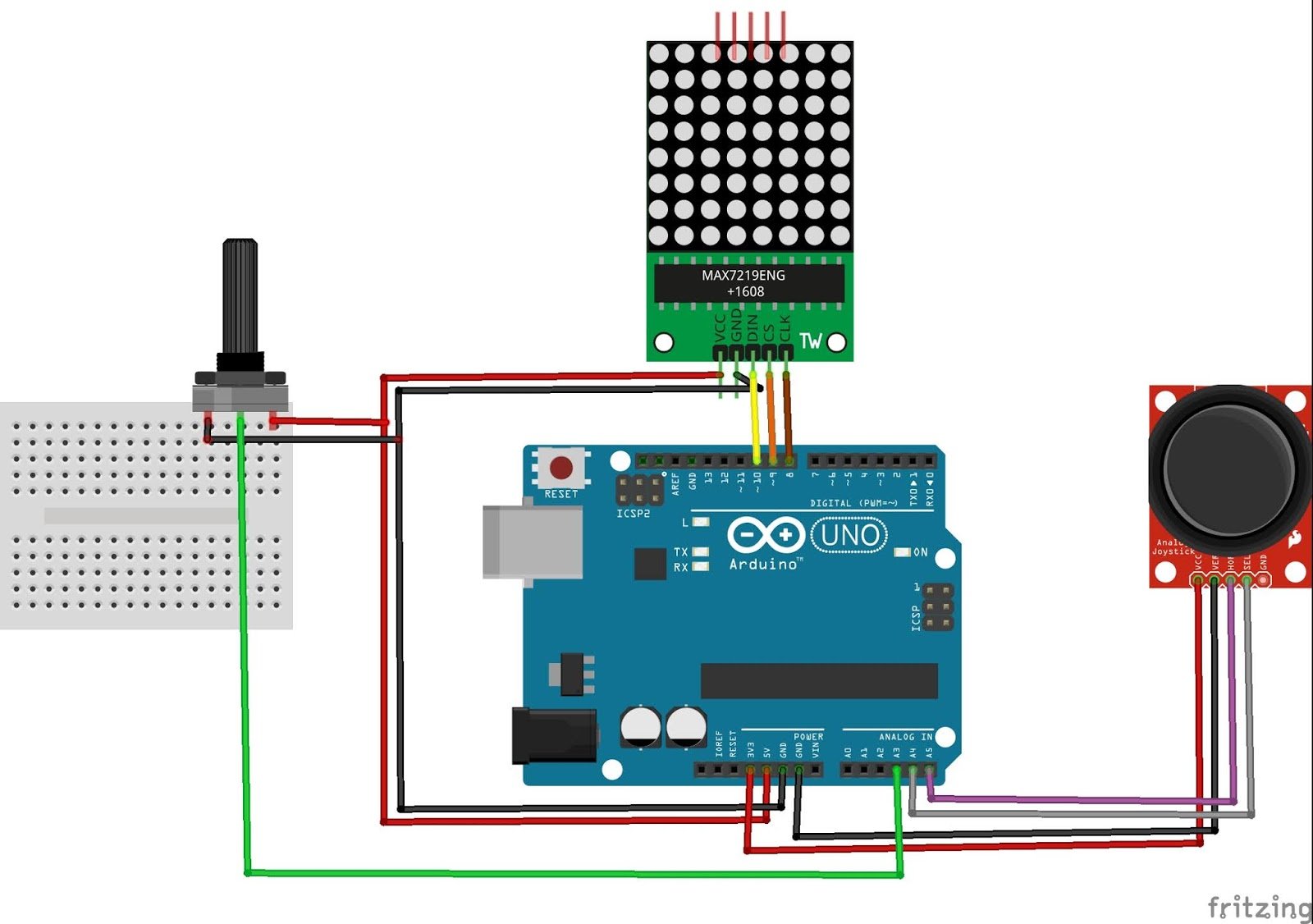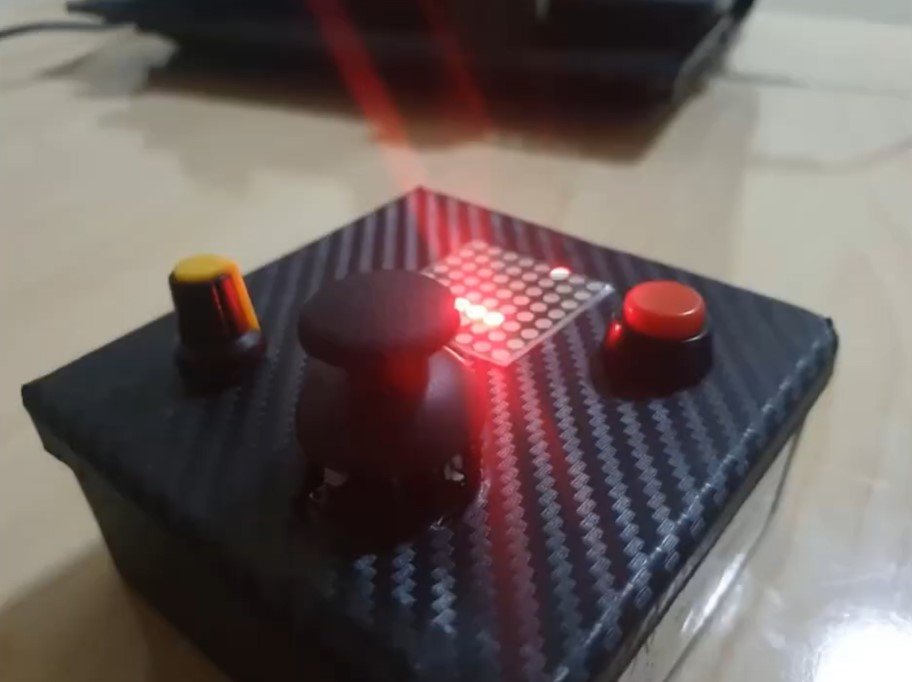
Arduino Matrix Snake Game
Arduino Matrix Snake Game: A Fun DIY Project
In this project, we created a Snake Game using an Arduino microcontroller and an LED matrix display. The game combines classic gameplay with modern electronics, resulting in a portable and entertaining device that showcases the possibilities of DIY electronics.

Overview of the Project
The game operates on a simple premise: guide a snake using a joystick to eat apples that appear on the screen. Each time the snake eats an apple, it grows longer, making the game more challenging as you try to avoid colliding with the walls or the snake’s own body. The game keeps track of the maximum number of apples eaten, displaying your score at the end—whether you win or lose.
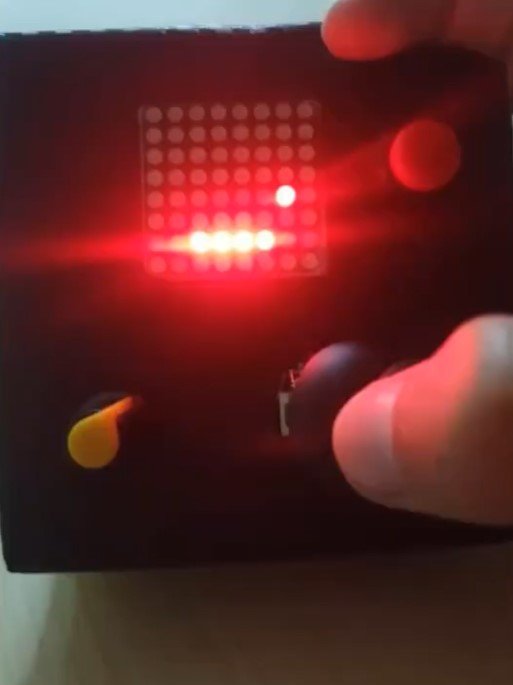
Key Features
- Joystick Control:
- The joystick allows you to control the snake’s movement in all four directions (up, down, left, and right).
- Adjustable Speed:
- A potentiometer is used to adjust the speed of the snake, making the game customizable to your skill level.
- Scoring System:
- The number of apples eaten is displayed as a score at the end of each game, adding a competitive element.
- Portable Design:
- Powered by a rechargeable lithium-ion battery, the game is completely portable and can be taken anywhere.
Building Process
1. Initial Testing on a Breadboard
We started by assembling the components on a breadboard to test the game logic and ensure all parts worked correctly. This step helped us debug any initial issues and fine-tune the gameplay mechanics before finalizing the design.

2. Preparing the Enclosure
To make the game more polished and user-friendly, we built an enclosure to house all the components.
- Holes for Components: We drilled precise holes in the box to mount the joystick, LED matrix display, and potentiometer.
- Aesthetic Enhancements: The enclosure was painted black, and we applied a carbon fiber film on the top surface for a sleek and professional look.
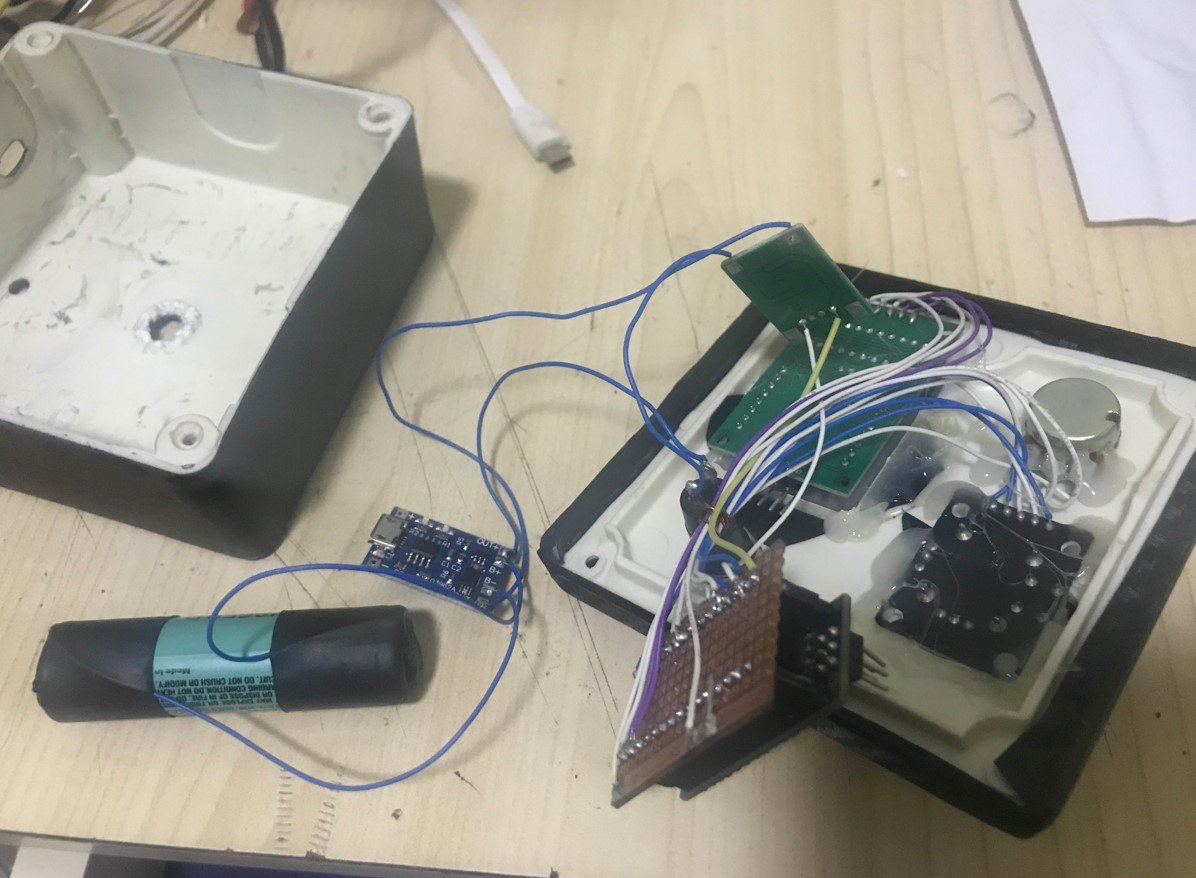
3. Soldering and Assembly
- We soldered the components onto a perfboard for durability and a cleaner layout.
- A lithium-ion battery pack was added, complete with a charge controller module and an input jack for charging.
- All the components were securely mounted inside the enclosure, and the wiring was completed according to the circuit diagram.
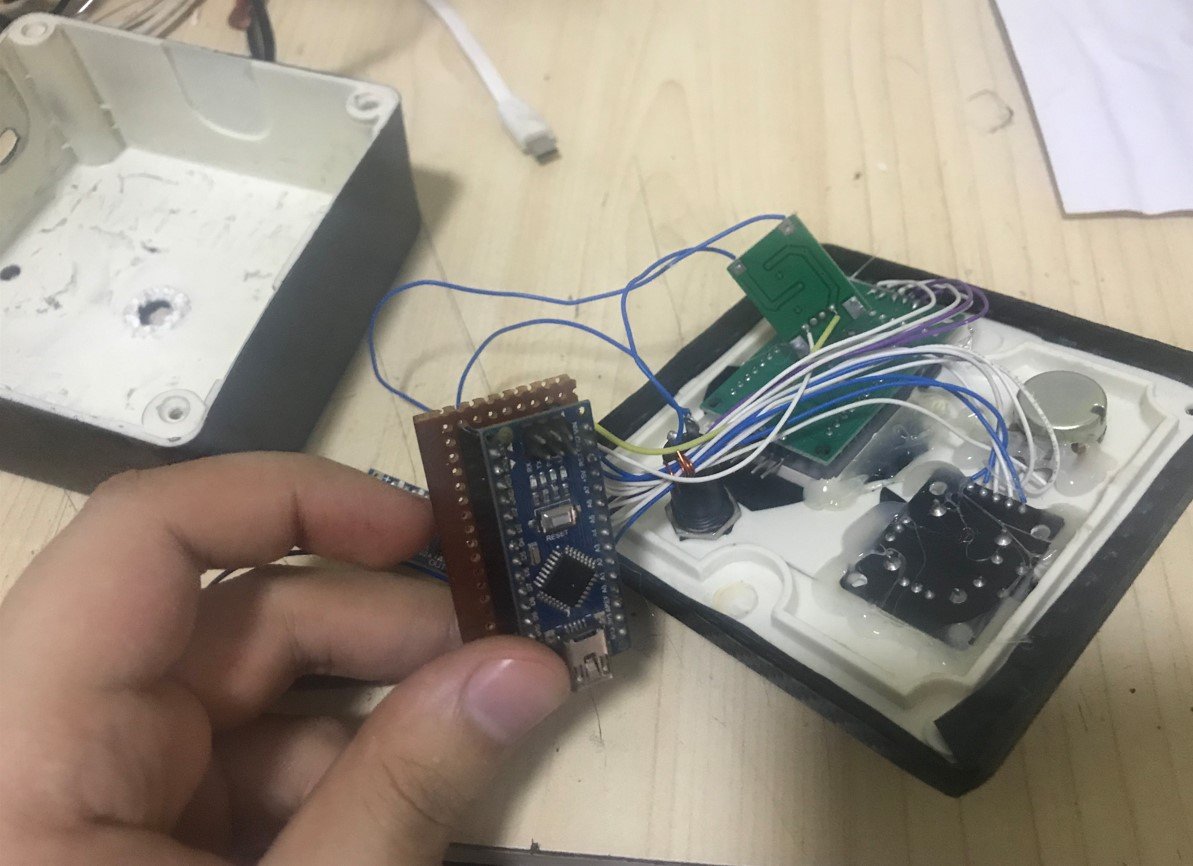
4. Final Testing and Completion
After assembly, we tested the project thoroughly to ensure all features—gameplay, speed adjustment, and portability—worked as intended.
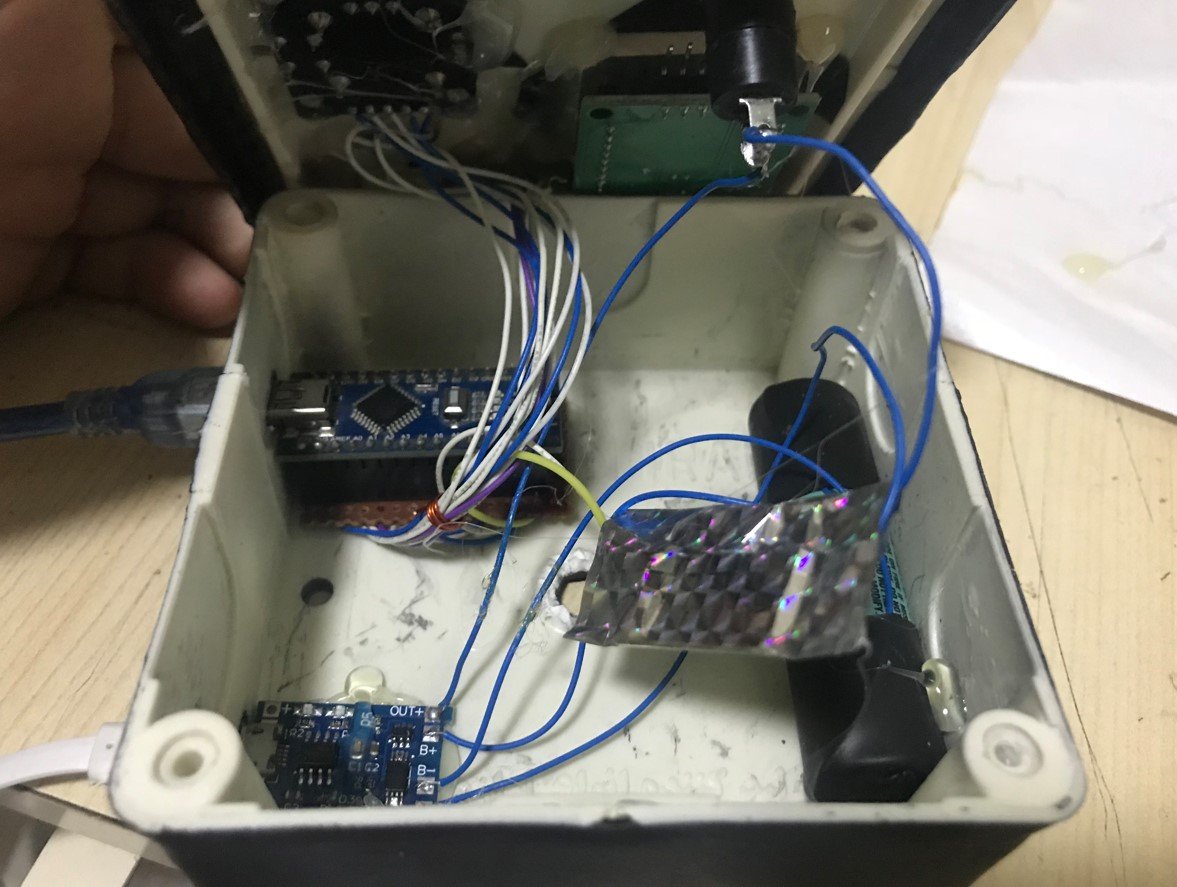
Components Used
- Arduino Microcontroller: The brain of the project, running the game logic.
- LED Matrix Display: Displays the game grid where the snake moves and eats apples.
- Joystick Module: Allows directional control of the snake.
- Potentiometer: Adjusts the snake’s speed dynamically.
- Lithium-Ion Battery: Provides portable power to the system.
- Charge Controller Module: Ensures safe charging of the battery.
- Perfboard: Provides a stable base for soldering and connecting components.
- Enclosure Box: Protects the components and gives the project a polished finish.
Gameplay Experience
Playing the Arduino Matrix Snake Game is both nostalgic and exciting. The adjustable speed adds a layer of difficulty, catering to both beginners and seasoned players. The portability of the device makes it a great companion for on-the-go fun.
Why Build This Project?
- Educational Value: Learn about microcontrollers, soldering, and game programming.
- DIY Satisfaction: Create a functional and polished product from scratch.
- Fun and Replayability: The game is simple yet addictive, offering endless hours of entertainment.
This project is a fantastic way to explore the world of electronics while building something enjoyable. Whether you're a beginner or an experienced maker, the Arduino Matrix Snake Game is a rewarding project that combines creativity, technology, and a bit of gaming nostalgia.
To Download Code Click Here
Posted by Ali Aslan at Sunday 5th of January 2025 02:11:13 PM
